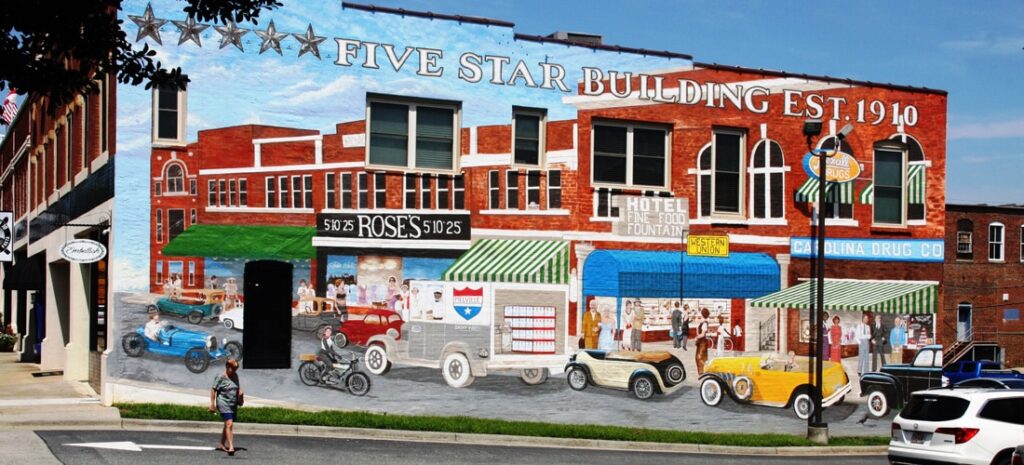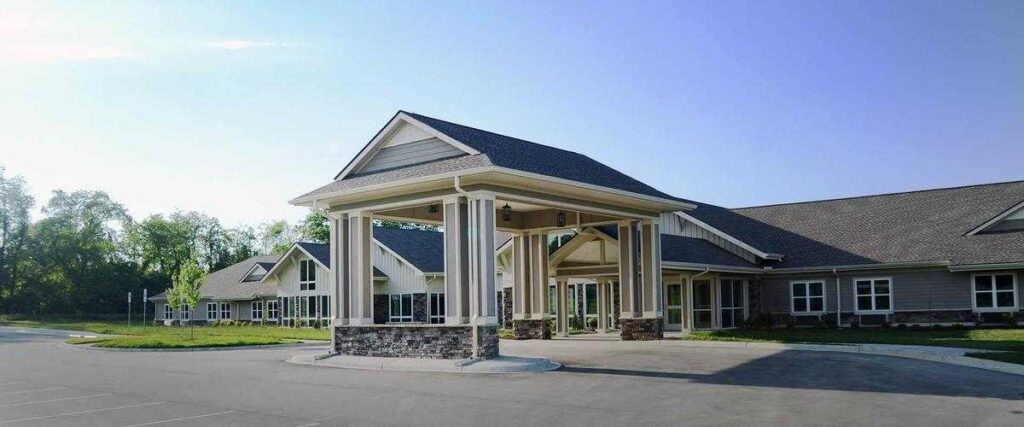HOA Management in Mebane, NC
William Douglas Property Management offers HOA management and association management services in Mebane, NC
Mebane, NC Facts & Information
The City of Mebane is a municipality located in both Alamance and Orange counties North Carolina. However, Mebane is predominantly in Alamance County. Mebane was incorporated by the North Carolina General Assembly on March 9, 1883.
Mebane is the 56th largest municipality in the State of North Carolina.
Mebane’s population per the 2020 United States Census was computed to be 17,797. From Mebane’s 2010 United States Census, this was a population rise of 35.9%.
Per the 2010 United States Census, Mebane’s population was computed to be 11,393.
The first Census carried out for Mebane was the 1900 United States Census. This Census calculated the population to be 218.
When the North Carolina Railroad constructed their depot in the summer of 1855, the railroad originally and briefly named their stop “Mason Hall.” In 1856, the stop was named “Mebanesville” in recognition of the Mebane families who lived around the depot. The railroad stop’s name was shortened to “Mebane” in 1885.
As of the 2012 United States Census, there were 1,245 total businesses or firms within the city limits of Mebane.
Per the 2010 United States Census, the land area of Mebane was 8.36 square miles.
Per the United States Census Bureau (2015-2019), 94.2% of Mebane’s population who are 25 years of age or older are high school graduates.
Mebane’s population per square mile is 1,363.3 per the 2010 United States Census.
Per the United States Census Bureau (2015-2019), 39.9% of Burlington’s population who are 25 years of age or older hold a bachelor’s degree or have obtained a higher level of education.
Per the United States Census Bureau (2015-2019), there were 5,763 households in Mebane.
As of 2019, Mebane’s median household income was $64,726.
The coordinates or location of Mebane per Google Earth – Latitude: 36°05′50.84″N, Longitude: 79°16′09.62″ W
Elevation of Mebane at the above coordinates or location per Google Earth is 679 feet.
High Point, North Carolina, is sometimes credited with having the first furniture factory in North Carolina in 1888. The White Furniture Company of Mebane was in operation as of 1881.
Mebane, Alamance County an Overview
Alamance County was established in 1849 when Orange County was divided to create Alamance County. The word “Alamance” reportedly is Native American for “blue clay,” and the county is named for the Alamance Creek. The Shakori, the Eno, and the Occaneechi Indians are the early recorded inhabitants of the future Alamance County. Native Americans were the primary inhabitants of the future Alamance County up through the 1700s. While explorers, traders, and trappers of European descent traveled through the future Alamance County, settlers of European descent did not begin arriving until the early 1700s. Settlers of European descent did not begin arriving in large numbers until around the mid-1700s.
These early settlers to the future Alamance County were predominantly farmers. More specifically, the vast, vast majority were subsistence farmers, farming small plots of land. The majority of these early settlers of European descent were of German descent and Scots-Irish origin. There were small pockets of Quakers immigrants within these early arrivals as well.

The “blue clay” banks of Alamance Creek, in the future Alamance County, are where on May 17, 1771, North Carolina’s Royal Governor William Tryon and his state militia force engaged the Regulators. The Regulators were a belligerent group of North Carolinians, mostly rural farmers, and were not well organized. While the Regulators may not have been an open rebellion against the British Crown, they were openly hostile and organizing. This engagement became known as the Battle of Alamance and was a precursor of the American Revolution. This uprising before the American Revolution is often pointed at to express the dissatisfaction many of the American people had with British governance.
During the American Revolution, there were no major military engagements in what would become Alamance County. In neighboring Guilford County, the Battle of Guilford Court House took place on March 15, 1781. This battle is considered the turning point of the American Revolution because it weakened British forces to such an extent that it made the victory at the Battle of Yorktown possible on October 19, 1781. However, the patriot forces of Continental General Nathanael Greene at the Battle of Guilford Court House were comprised of militia from Guilford and the surrounding counties, which would have included the future Alamance County.
The future Alamance County and the future City of Mebane demographics changed very little after the American Revolution. This all began to change around the mid-1800s with the development of textile mills and mill towns. However, agricultural-related enterprises were still predominant well into the late1800s. Edwin Michael (E. M.) Holt (1807-1884), considered the father of textiles in Alamance County, opened the fourth textile mill in North Carolina in 1837, Alamance Mills, near present-day Burlington. Other textile mills would develop in Alamance County, and textile production slowly became a leading economic driver in the county.
Farming continued to dominate the future Mebane area. The primary crops being cultivated were tobacco and grains. Textile mills developed in other parts of the county while farming still was the primary focus of the future Mebane area. Mebaneville turned into a thriving business hub and a trade center for area farmers and merchants.
Mebane is in existence because of the North Carolina Railroad connecting Charlotte and Goldsboro. The North Carolina Railroad rail line was completed on January 29, 1856. The following day, January 30, 1856, the first locomotive traveled the new rail line to cheering crowds along the route. Newspaper accounts more than 100 people turned out at the Mebanville station to see the train. With the completion of the rail line at Mebanville, people began constructing homes and businesses around the train station. By 1883, 27 years after the arrival of the railroad, the population was around 250. The Alamance Tobacco Warehouse was in business. T.H. and J.H. Fowler were producing smoking tobacco, and Tate and Co. were noted as tobacco manufacturers. Tate and Walker General Store was very prosperous.
Some of the other businesses were George W. Brooks, shoemaker; J.H. Fowler General Store; J.P. Gibson General Store; W.F. Jones Grocery Store; J.E. Scott, Tobacco Store; Scott Brothers General Store; S.K. Scott & Company General Store; J.T. Shaw, jeweler; George W. Tate, machinist; Tate & Trolinger Flour Mill; White Drugs; White Brothers Saw Mill; White & Company General Store; and Wright & Thompson General Store.

White Brothers Furniture Co. was in operation in 1881 making furniture. Brothers William E. and David A. White, sons of Mebane cofounder Stephen A. White founded the company in Mebane in 1881. By 1899 the company was known as the White Furniture Company. They were the first furniture manufacturer in the south in 1905 to be awarded a U.S. government contract. In 1912, White Furniture Company furnished Asheville’s Grove Park Inn. The White Furniture Company was sold in 1985, and due to downsizing, the Mebane plant was consolidated into another plant and closed in 1993. The White Brothers Brother Furniture factory building was placed on the National Register of Historic Places in 1983.
The Stock Market Crash of 1929 and the following Great Depression of the 1930s brought financial troubles to the entire nation, and Mebane was not exempt from these financial troubles. Agriculture was still the predominant economic driver of the area; However, textiles played a large role in the area as well. And textiles manufacturing was affected significantly by the Great Depression. The end of the 1930s and the beginning of the World War is what began the economic recovery from the Great Depression in most of the United States.
Demand for agricultural and textile products increased drastically with fighting in Europe and Asia with the hostilities. This strong demand continued well into the 1950s while Europe and Asia were rebuilding their economies from the impact of the war. As foreign economies developed in the 1960s and 1970s, the American domestic agricultural and manufacturing economy matured.
Grains and tobacco crops were slowly replaced by other crops since the 1970s. Soybeans and corn are more common crops if crops are being grown at all. Small farms of the past in the last 40 years have slowly been disappearing, unable to compete with large midwestern farms and cheaper foreign agricultural products.
It has fared much worse for textile manufacturing. The poor economy of the late 1970s and early 1980s and the importation of low-cost foreign-produced textile products initiated the fall of domestic textile production. The trade agreement between the United States, Canada, and Mexico, known as the North American Free Trade Agreement or NAFTA, had the most detrimental effects on domestic textile production. This trade agreement was ratified in 1993, and it began adversely affecting domestic textile production as soon as it was signed.
Since the 1980s, Mebane has focused on developing a more diverse economic foundation. There are some large manufacturing operations. However, there are a great many smaller-scale manufacturing operations with a more diverse industrial base. There are more service-oriented enterprises that employ on a smaller scale but are much more economically stable. Mebane is on the outskirts of the Research Triangle or RTP but has become a bedroom community for Research Triangle, Durham, Chapel Hill, Raleigh, Cary, and Greensboro. This diverse economic base has allowed Mebane to weather economic ups and downs more evenly than ever before in its history.
Mebane an Overview for Homebuyers looking for a Nice Neighborhood to Live
Mebane, NC, is within Alamance Country and Orange County, North Carolina. Alamance has relatively low property taxes as compared to some of the surrounding counties. The town was named for Revolutionary War North Carolina Militia Brigadier General Alexander Mebane and a United States congressman from North Carolina. Mebane is one of the fastest-growing municipalities in North Carolina. This city has a total area of 8.5 square miles, of which 8.3 square miles are land and 0.12 square miles, or 1.36%, is water.
In this blog, we invite you to scroll through the history of Mebane and everything else about it. We have also gathered some information on native festivals, local events, cultural food, restaurants, and fun places for tourism.

The History of the City of Mebane:
Mebane had a post office established in 1809. As mentioned earlier, the town was named for Brigadier General Alexander Mebane, a general and a member of the U.S. Congress in the 1790s. The railroad arrived in 1856, and the railroad eventually named their stop Mebanesville. This settlement town was not always called Mebane, and the name was changed from Mebanesville in 1883. In February 1987, the charter was amended to the City of Mebane.
Mebane’s early government body consisted of a Mayor and four Town Commissioners. The first-ever government meeting of the Mebane government was held in a drugstore. Today the city has the main Municipal Building, the City Manager and Administrative offices, and a Water Department.
Mebane saw its first industrial growth in 1881, with the establishment of the White Furniture company. Other companies which have developed in Mebane are the Mebane Bedding Company (now known as Kingsdown) and the Ridgeville Telephone Company ( now known as MebTel Communications).
Now, let’s look closely at the native festivals and events which are celebrated in Mebane.
Mebane’s Dogwood Festival
This festival is sponsored by the Mebane Business Association. The Dogwood festival culture began in 1989. Almost 15,000 people attend the Dogwood weekend festival. This festival includes major musical entertainment programs, art and craft events, traditional food stalls, and a typical golf tournament.
Mebane’s major business personnel actively participate in the events and promote the school and college students to enroll in different activities during festivals. High school bands and dance performers take part in the events like parades and dramas. Other festivals that are celebrated in Mebane are the Carborro Music festival. It is generally held in September on Carrboro Street.
Another major festival is the National Folk Festival, filled with music, food, art, and cultural activities.
A great food festival in Mebane is The International Festival of Raleigh. This festival is organized on Blue Ridge Road. You will find some fantastic food options. From Indian samosas to Brazilian Nutella-filled cheese bread and Dutch desserts, everything is irresistible in this festival.
Our next segment will inform you about the different places you can visit in Mebane, NC.
Here’s a list of 10 places which you can visit in Mebane:
Lake Michael Park
Mebane Train Display
Tanger Outlets Mebane
The Winery at Iron Gate Farm
Mebane Public Library
Destination Downtown
The Curious Peddler
Quicks Antiques
The elegant Relic and Hen Feathers
Mill Creek

You should definitely check these places out in Mebane.
If you are wondering about accommodation in Mebane, we have gathered some good intel about hotels and stays. You can also check out rented rooms and areas for short stays.
Hampton Inn Mebane
Hampton Hill Mebane is around 3 km away from the main city center and 2.4 km away from Tanger Outlet Center. It is a nice hotel, great for families and friends.
Holiday Inn Express Hotel and Suites Mebane
This hotel is known for its accessibility and services. A spacious hotel with clean rooms and is moderately inexpensive.
Fairfield Inn & Suites by Marriott Mebane
Very nice hotel for a comfortable stay. It also has a pool and lawn area for outdoor events and activities.
Conclusion:
So here was an entire article on Mebane, NC. Mebane is a beautiful town and situated close to a great many attractions. But when you discover places in Mebane, you are sure to fall in love with this town. It still has the small-town feel.
Need Association Management?
Contact Us
How to Start
The Process of Working With Us


REQUEST A PROPOSAL
Request a proposal online or call us directly.


WE WILL REVIEW YOUR CASE
Our team of highly trained professionals will review your case.


RECEIVE A CUSTOM TAILORED PLAN
We will create a customized management plan for your community.


SEAMLESS TRANSITION
We will implement a seamless management transition and integrate our tech.


SIT BACK & RELAX
Enjoy better, affordable and a more reliable, hassle-free management system.




